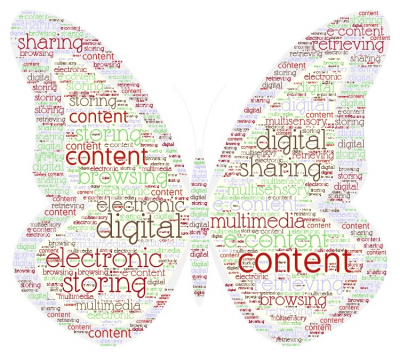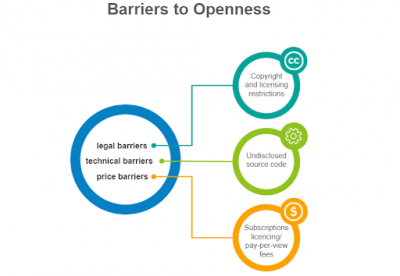How to Develop
Aperçu des sections
-
Personal Learning Environments (PLEs) are a response to the way people are using technology for learning and which allows them to themselves shape their own learning spaces, to form and join communities and to create, consume, remix, and share material.
Apprenticeships are seen as a way of providing training leading to contextualized and situated competence: the ability to apply knowledge to practice. Learning takes place through different organisations and learning venues. Apprentices provide evidence of their learning and competence, often in the form of a portfolio.
With the growth of Higher Level Apprenticeships and the new demands for creativity, digital competence PLEs provide a structure for both scaffolding and managing personal learning learning, as well and developing and supporting metacognition.
The issue is how to support apprentices in developing their Personal Learning Environment.Target audience:
The course provides as an example Apprentices in Social work at EQF Levels 4 and 5 in the UK. But it is applicable for any teachers and trainers aiming to support higher level apprentices in developing their Personal Learning Environments.
-
According to Revised Bloom's Taxonomy (Anderson and Krathwohl, 2001), the learning scenario applies to four areas
- Understanding: Understanding the needs of of learners, and teh use of digital technologies to support learning
- Applying: Applying knowledge gained through theory to practice in real contexts
- Analysing: Analysing the needs of learning and how to use technologies to support own learning
- Evaluating: Evaluating and reflecting on own performance in practice
-
Student Requirements
Students need at least an intermediate level of digital literacy. It is noted that while there are requirement for apprentices to have qualification in English (or alternatively sign reading) and Math prior to undertaking an apprenticeship there is no such requirement for digital literacy and the use of Information and communication Technology.
Teacher / TrainerRequirements
Teachers need a high-level competence in the use of technology for teaching and learning. We suggest implementing the activities suggested in this learning scenario for those who have already mastered basic digital skills in DigCompEdu, as referenced above.
It is, therefore, useful to undertake, beforehand, the IDC-VET self-assessment tool to ensure consistency with this requirement.
Teachers also require an understanding of the three fields covered in this scenario – namely PLE diagrams, Workflows and Scholarly Ontologies -
The most common method for representing a PLE is a simple diagram. Thus far, the most convenient way to represent a scholarly ontology is an excel spreadsheet which can output to various file formats. One of these presents a simple holistic view of a PLE, the other presents an atomised view of research activity in the form of scholarly ontology. Reconciling these two methods of representing scholarly activity is a significant boundary problem of the type which is at the heart of bridging the gap between human understanding and digital representations.
In order to deepen and enrich learners' ability to describe their digital tool use more explicitly,we propose to add another layer to the signature pedagogy of PLE.
For teaching purposes this entails:
● Ask students to draw a diagram of their PLE in the traditional way.
● Ask students to modify the original diagram to include workflow, and the dimensions of trust.
● Ask students to break down that PLE diagram by applying a Scholarly Ontology like NeMO to it.
This scenario for teaching and learning is explained in more detail in the plan below.
-
This module is designed ffor using assessment for learning. Assessment for learning (also known as formative assessment) is a way of assessing students' progress and understanding during the learning process, rather than just at the end. It can be used to help students develop their personal learning environments (PLEs) by providing them with feedback on their progress and areas for improvement.
Here are some ways you can use assessment for learning to assess students' work on developing their PLEs:
Use self-assessment: Encourage students to reflect on their own learning and progress by asking them to complete self-assessment activities, such as creating a learning plan or setting goals for their PLE development.
Provide feedback: Give students regular feedback on their work and progress, including specific suggestions for improving their PLEs.
Use peer assessment: Have students review and assess each other's PLEs, providing constructive feedback and suggestions for improvement.
Use online tools: There are various online tools and platforms that can help you assess students' work and progress on developing their PLEs, such as learning management systems or online portfolios.
By using these and other assessment for learning strategies, you can help students develop their PLEs effectively and efficiently, and support their overall learning and development.
-
We have used variants of this scenario and activities many times in different countries in Europe. There is a hierarchy of difficulty: apprentices will find it relatively simple to understand the ideas behind Personal Learning Environments and to develop, share and explain their PLE diagrams. More difficult is the idea and practice of Personal Knowledge Management while Scholarly Ontolgies are another step up in terms of understanding and practice.However, we have also found the activities presented here are flexible in terms of working with learners: we have presented this as a short workshop activity in conferences to a much more in depth (and longer) activity as part of courses. The activities are also flexible in terms of teaching and learning mode: face to face, online or blended.

